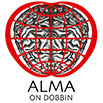
Cruel Correspondence
Anti-Semitic Postcards from 1895-1930
2B Galéria, Budapest, loaned from the Harriet & Kenneth Kupferberg Holocaust Resource Center and Archives, Queensborough Community College, CUNY, NY.
June 6, 2014 throughJuly 2, 2014
In the early 20th century, picture postcards were the most convenient form of short and quick communication. The telegraph was expensive and the telephone was only in its infancy. Billions of postcards were sent each year, mostly from Europe and America. The picture postcard was the e-mail of a century ago. Publishers met the demand by printing postcards covering every topic imaginable, including anti-semitic pictures and messages that reflected racist attitudes toward Jews. These postcards show that political leaders, journalists, scholars and rabble-rousers spread anti-semitisms; it was accepted by the general population, who eagerly bought and mailed postcards that were derogatory to Jews. Such postcards were printed in Germany, the United States, England, Hungary, Russia, and even in Argentina. Those created in Germany often were overtly hateful and vile, in contrast to American examples, which focused more “humorously” on negative stereotypes about Jews.

“Greetings from the Kolner Hof” is the title of this German postcard (above). The text under the greeting indicates that this is the best exit from Frankfurt’s, to reach the Kolner Hof Hotel opposite. Mounted on its corner is an enormous sign that says: “only Jew- free hotel in Frankfort-am-Main,” followed by street directions. Under the hotel picture another text tells us: “New Jerusalem on the Jordan river of Frankfurt”—suggesting that Frankfurt has been so flooded by Jews that it resembles the real Jerusalem, but on the Main River. The message of this anti-semitic picture is clearly shown in the boot coming out of the hotel kicking a travelling Jewish salesman, reinforced by a menacing clenched fist. The Jew’s long nose is as evident as his frizzy hair. The statue in the box honors King Wilhelm II (1859-1941).
In the United States, too, there were hotels that did not admit Jewish or black guests (below). The statements to that effect were far more subtle than those promoted by the German hotel postcards. American hotels noted: “restricted clientele.” Everyone knew who the “restricted” were.
.jpg)

The sender of this 1901 Hungarian postcard, sent from Lake Balaton in western Hungary to Steiermark, Austria, wrote just one short line: “Many heartfelt greetings from all of us.” No reference is made to either the photo or the blunt message. The photo is of a long caravan of Jews stretching as far as the eye can see. As the text indicates, this is a picture of their expulsion. Rather than the figure of “Jews who became rich from robbing gentiles,” these are pauperized Eastern European Jews carrying their meager possessions on their backs. The printed lines leave no doubt about the image: “One hundred Jews in a row/ deportation/ Nathan goes in front/ bundles on their backs/ Bye, Papa Lueger.” “Lueger” refers to Karl Lueger (1844-1910) the turn-of-the-century mayor of Vienna. Not only did he advocate racist policies against non-German speaking minorities in Austria-Hungary, but his anti-semitic platform also became such an inspiration to Hitler that he adopted it himself.

This postcard has a commemorative cancelation dated November 8, 1937, the day when the “Der Ewige Jude” [The Eternal Jew] exhibition opened in the library of the German Museum in Munich. More than 5,000 visitors a day—412,000 in all—viewed “The Eternal Jew” in Munich. It then moved on to Vienna and Berlin. The exhibit, the largest pre-war anti-semitic show produced by the Nazis, featured photographs pointing out the stereotypically “Jewish” features of political figures and film stars such as Leon Trotsky and Charlie Chaplin, who was not Jewish. The display also underlined supposed Jewish attempts to Bolshevize Germany. The racist stereotype of “the Eastern European Jew” is conventionally depicted, via the long-hooked nose, beard and side locks, and black kaftan, holding coins in one hand and a whip in the other. Under his arm is a map of Germany, as if he owns it, imprinted with the Communist hammer and sickle. Ironically, these two stereotypes are contradictory: “the capitalist Jew” who seeks wealth would hardly embrace Communism! The same image of “Der Ewige Jude” appeared in the Paris metro during the German occupation of France.
THIS EXHIBITION WAS LOANED FROM THE HARRIET AND KENNETH KUPFERBERG HOLOCAUST RESOURCE CENTER AT QUEENSBOROUGH COMMUNITY COLLEGE, NEW YORK, WHERE RABBI ISIDORO AIZNEBERG, SCHOLAR-IN-RESIDENCE, CURATED THE EXHIBIT AND AUTHORED THE TEXTS.
© ALMA 2014